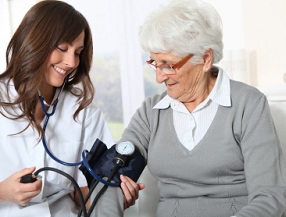Slip and fall incidents among elderly residents in nursing homes can be very serious, sometimes even deadly. One out of every three nursing home residents dies within 12 months of going to the hospital for a slip and fall. That is just an insane statistic. Our Maryland nursing home lawyers see too many nursing home fall cases with tragic outcomes. Nursing home negligence is often a major contributing factor when elderly residents fall and injure themselves. In most nursing home fall cases, the negligence involves poor facility maintenance (unkept hallways, wet floors, etc.) or negligent care by staff members (failing to put up bed rails, walking unassisted, etc.). In some cases, however, elderly residents fall because of underlying health conditions. Orthostatic hypotension (low blood pressure) is a health condition that is known to cause sudden falls among elderly nursing home residents. Nursing homes have an obligation to monitor their residents for conditions such as orthostatic hypotension and take appropriate precautions.
What is Orthostatic Hypotension?
Orthostatic hypotension (also known as postural hypotension) is a sudden drop in blood pressure that often occurs when someone gets up from a lying down or sitting position. The term “orthostatic” means an upright posture, and “hypotension” is the medical term for low blood pressure. The clinical definition of this orthostatic hypotension is when standing or sitting up causes blood pressure to drop more than 20 in systolic (top) and 10 in diastolic (bottom) pressure.
 Maryland Medical Malpractice Attorney Blog
Maryland Medical Malpractice Attorney Blog


